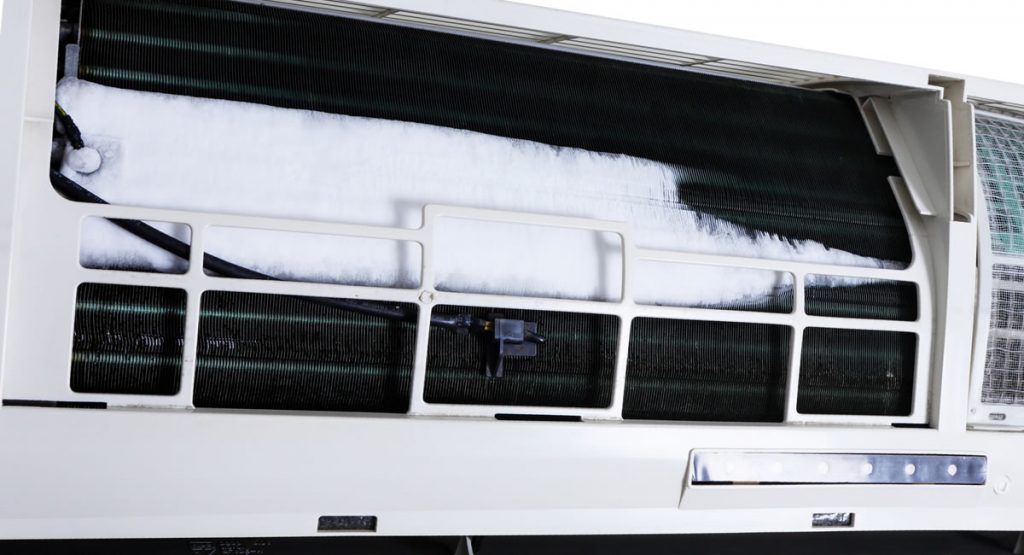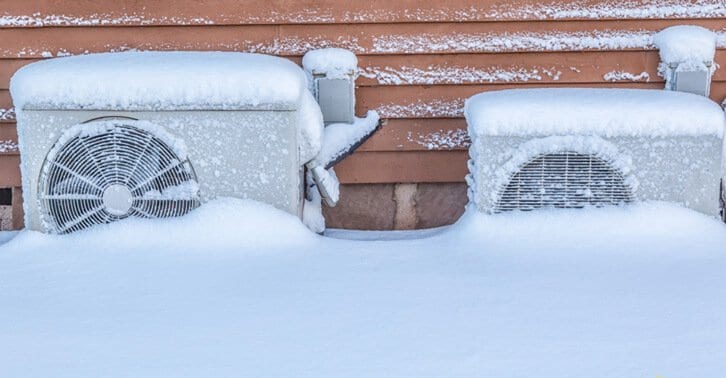What to Deal With a Frozen AC Pipe - Essential Measures for Restoration
What to Deal With a Frozen AC Pipe - Essential Measures for Restoration
Blog Article
The author is making a number of great pointers about Have a Frozen AC Line? Here’s How to Fix It overall in this content which follows.

Introduction
Discovering that your air conditioning pipe is frozen can be concerning, specifically throughout hot summertime when you count on your air conditioning unit one of the most. Understanding what to do in such a circumstance is essential to stop further damage to your air conditioning system and ensure your convenience indoors.
Comprehending the Causes
Numerous elements can add to the cold of an air conditioning pipeline. Recognizing these reasons can help you address the issue properly.
Absence of Airflow
One usual source of an icy AC pipeline is inadequate air movement. When the air movement over the evaporator coil is limited, it can cause the coil to go down below freezing temperature level, leading to ice formation on the pipeline.
Reduced Refrigerant Levels
Inadequate refrigerant levels in your air conditioner system can additionally lead to an icy pipeline. Low cooling agent degrees can trigger the stress in the system to drop, causing the freezing of dampness on the evaporator coil.
Cold Weather Conditions
In chillier climates, freezing temperatures outside can add to the freezing of air conditioner pipes. If your air conditioner unit is not effectively protected or if there are leakages in the ductwork, cool air can infiltrate the system, creating the pipeline to ice up.
Dirty Air Filters
Dirty or blocked air filters can restrict air flow in your a/c system, leading to different concerns, including an icy pipe. It's vital to change or cleanse your air filters frequently to make sure appropriate air flow and avoid ice buildup.
Signs of a Frozen Air Conditioner Pipe
Identifying the indications of a frozen air conditioner pipe is crucial for punctual action.
Lowered Airflow
If you discover a substantial reduction in air movement from your vents, it could suggest an icy pipe.
Ice Buildup on the Pipe
Visible ice buildup on the refrigerant line or the evaporator coil is a clear indication of a frozen AC pipe.
Unusual Sounds from the Unit
Uncommon sounds, such as hissing or gurgling, coming from your AC device can signal that there's ice present on the pipe.
Immediate Actions to Take
When confronted with an icy AC pipe, it's important to act swiftly to stop more damages to your cooling system.
Shutting off the a/c
The first step is to turn off your ac unit to stop the system from running and aggravating the concern.
Looking for Blockages
Examine the area around the interior system for any blockages that may be obstructing air flow, such as furnishings or curtains.
Defrosting the Pipe
You can utilize mild methods like putting towels soaked in warm water around the frozen pipeline to help thaw it gradually.
Safety nets
Taking safety nets can assist stay clear of future incidents of an icy a/c pipe.
When DIY Methods Fail
If your efforts to thaw the pipe or address various other issues are not successful, it's time to hire a specialist.
Significance of Hiring a Professional HVAC Technician
A licensed HVAC professional has the know-how and devices required to identify and repair problems with your air conditioner system securely and efficiently.
Regular Maintenance Checks
Arrange routine maintenance consult a professional HVAC service technician to ensure that your air conditioner system is running efficiently.
Transforming Air Filters
Frequently change or clean your air filters to prevent air flow constraints and preserve optimal performance.
Insulating Exposed Pipes
If your a/c pipes are exposed to cool temperatures, consider protecting them to prevent freezing throughout winter season.
Seeking Professional Help
If DIY techniques stop working to fix the issue or if you're not sure regarding exactly how to proceed, it's best to seek help from a qualified HVAC technician.
Final thought
Dealing with a frozen AC pipeline can be an aggravating experience, but understanding exactly how to react can aid lessen damage and restore convenience to your home. By comprehending the reasons, identifying the indicators, and taking timely activity, you can effectively attend to the concern and stop future incidents.
What to Do If Your AC Line Is Frozen
Make Sure All Supply and Return Air Vents Are Open
If you notice problems with airflow, the first thing you should do is check your supply and return vents. Supply vents distribute clean, conditioned air throughout your home. As this air becomes stale, it’s pulled into the return vent, where it’s reconditioned before being sent back out through the supply vent.
When these vents are closed, air won’t flow in the home. Before examining your AC, check the vents in every room and ensure they’re all open.
Check for a Dirty Air Filter
Another possible cause of limited airflow is a dirty air filter. Your air conditioner’s filters catch elements you don’t want to breathe in, such as dirt and dust. Over time, filters can become clogged, ultimately blocking air from flowing in and out. The lack of airflow can then cause the entire coil to freeze and will completely restrict any air from moving through it. The AC may need to be powered off for one to two days to allow the coil to thaw after replacing the filter to allow proper functioning of the unit. This debris can also accumulate on your AC’s evaporator coil, requiring a more serious repair. In general, air filters should be cleaned regularly (about every two weeks).
Assess Your Outdoor Unit
In addition to checking your AC, assessing the outdoor unit is a good idea. Also known as the condensing unit, it works with your interior unit to release heat outside. An issue with the outdoor unit can result in rising internal temperatures.
Overgrown Shrubs or Clogged Leaves
From leaves and twigs to shrubs and debris, there’s no shortage of outdoor elements that can accumulate around your condensing unit. When these elements get lodged inside the unit, they can block airflow. Fortunately, removing the blockage can solve the problem.
Sounds of a Broken Fan
Shrubs and leaves aren’t the only things that can impede your outdoor unit’s airflow. If the fan is broken, the unit won’t be able to properly get rid of heat — which means the internal temperature won’t go down. First, make sure the fan is spinning. If it is, check for the following sounds of a broken fan:
Buzzing Rattling Screeching Hissing Clicking Preventative Measures
Nobody wants to deal with a frozen AC line. In addition to causing problems with your air conditioner, they require professional repairs. On the bright side, there are preventative measures you can take to help ensure this issue doesn’t arise in the first place.
https://www.coopergreenteam.com/blog/what-to-do-if-ac-line-frozen

I stumbled upon that article about Have a Frozen AC Line? Here’s How to Fix It while surfing the search engines. Do you know anybody else who is inquisitive about the topic? Please feel free to share it. Thanks a lot for going through it.
Apply Now Report this page